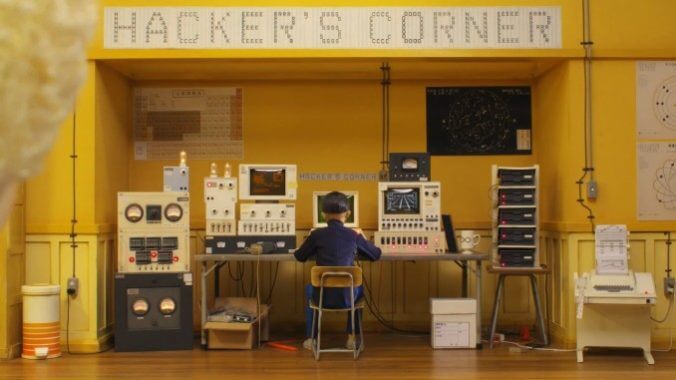What AI (and Everyone Else) Misunderstands About Wes Anderson

Some filmmakers inspire intense adoration. Others elicit an almost primal revulsion, frequently for the same reasons they’re beloved by their fans. Something about Wes Anderson brings out both qualities, often in the same people. For every person who finds solace in his melancholy worlds of impeccable aesthetic flair, there’s someone who is put off by his preciousness. Still, he is that most rare of creatures in mainstream American cinema: A director able to get sizable budgets and star-studded casts for wide release, adult-oriented films that are undeniably the vision of one person. His latest release, Asteroid City, sees him dip a toe into science fiction, set at a junior stargazing convention where the magic of outer space begins to loom more forebodingly than ever. It has inspired the usual discourse around Anderson, one of Film Twitter’s most well-worn topics.
But outside of that bubble, Anderson is having a curious moment as an online phenomenon. Not only have Wes Anderson challenges taken over TikTok, with users trying to replicate his style in their own lives, but numerous AI experiments have tried to ape his work for speculative tech demonstrations. An entirely artificially generated trailer for a Wes Anderson Star Wars quickly went viral, as did one of an Andersonian Lord of the Rings. There’s an Avatar one, and Harry Potter too. Bill Murray is “in” all of them.
In terms of the shallowest possible reading of Anderson’s work, he makes solid sense as an AI prompt. He is one of the most visually distinctive filmmakers working today, one of such a highly specific style that it can be recognized from 50 paces: Perfect symmetry, a varied color palette with a predilection towards pastels, deadpan faces, tableau-style compositions, and design with one foot firmly in kitsch. It’s so distinctive that the concept of “Accidental Wes Anderson” exists to define an entire branch of architecture. We see something so familiar, something so deeply ingrained in our cultural landscape, that we begin to kid ourselves into thinking it must be easy to do. I can make things symmetrical too, right? But you can’t. And you shouldn’t bother because, as every single AI showcase has proven, it will suck and entirely miss the point.
We know that AI, which is a fancy term for “plagiarism machine” when used in this context, has little understanding of art or the effort needed to create it. Why would it, when all it does is regurgitate other people’s work? The novelty of AI to weakly recreate famous filmmakers’ ideas has littered social media over the past few months. Almost all of them are terrible, totally bereft of any true sense of the director’s intentions, and many of them look absolutely nothing like the real films that inspired them. Consider one person’s attempt to make a Star Wars-esque ‘70s sci-fi directed by David Cronenberg, which was not only ugly and derivative, but antithetical to Cronenberg’s actual work. Clearly, AI found some underpaid critic’s description of the director as a body horror expert and decided that hot dog skeletons were up his alley. When you decide to reduce decades of work and achingly detailed artistic labor to a few weird images that vaguely imply a director’s vision, it’s no surprise that the end results are so poor.
-

-

-

-

-

-

-

-

-

-

-

-

-

-

-

-

-

-

-

-

-

-

-

-

-

-

-

-

-

-

-

-

-

-

-

-

-

-

-

-








































